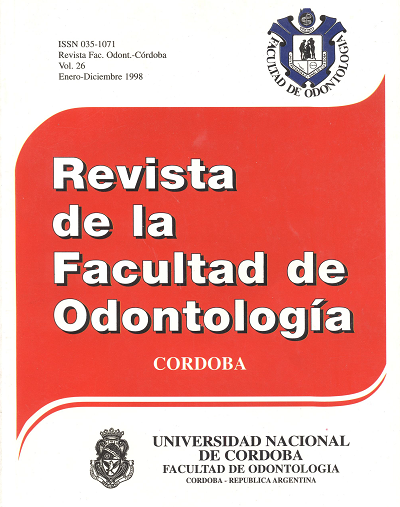Estudio histológico e histoquímica de las glándulas linguales de Egretta thula (aves: Ardeidae)
Abstract
In the present study it was investigated the histophysiology of the lingual salivary glands in white egret. Glands were processed by conventional histology (hematoxilin-eosin and Masson trichromic) and histochemical techniques including PAS, PAS/neuraminidase, alcian blue, toluidine blue and PNA lectin. The obtained results ha ve indicated the presence of numerous glands located anteroposterior and lateral !O the lingual cartila~e. In the anterior region, gla73ndular lo bes showed tubular structures formed by basophilic cuboidal cells.- In the posterior region a scarce number of mucous adenomers and intraepithelial glands were found. The histochemical reactions indicated the presence of glycoconjugate compounds in the glandular secretion. These glycoconjugates had a high number of terminal sialic acid residues because it was observed a decrease in PAS and alcian blue reactions after neuraminidase digestion. In addition, the affinity by PNA lectin was increased with enzymatic digestion. lt was also detected a strong alician.;philic and metachromatic sulphated groups. These findings showed that the glandular lingual secretion in these bires, present the same types of glycoconjugates as !hose described in mammals. In conclusion, this secretion could play a main role in food lubrication and non-inmune responsesDownloads
Download data is not yet available.
Downloads
Published
2017-03-17
Issue
Section
ARTÍCULOS
License
Aquellos autores/as que tengan publicaciones con esta revista, aceptan los términos siguientes:
- Los autores/as conservarán sus derechos de autor y garantizarán a la revista el derecho de primera publicación de su obra, el cuál estará simultáneamente sujeto a la Licencia de reconocimiento de Creative Commons que permite a terceros:
- Compartir — copiar y redistribuir el material en cualquier medio o formato
- La licenciante no puede revocar estas libertades en tanto usted siga los términos de la licencia
- Los autores/as podrán adoptar otros acuerdos de licencia no exclusiva de distribución de la versión de la obra publicada (p. ej.: depositarla en un archivo telemático institucional o publicarla en un volumen monográfico) siempre que se indique la publicación inicial en esta revista.
- Se permite y recomienda a los autores/as difundir su obra a través de Internet (p. ej.: en archivos telemáticos institucionales o en su página web) después del su publicación en la revista, lo cual puede producir intercambios interesantes y aumentar las citas de la obra publicada. (Véase El efecto del acceso abierto).

